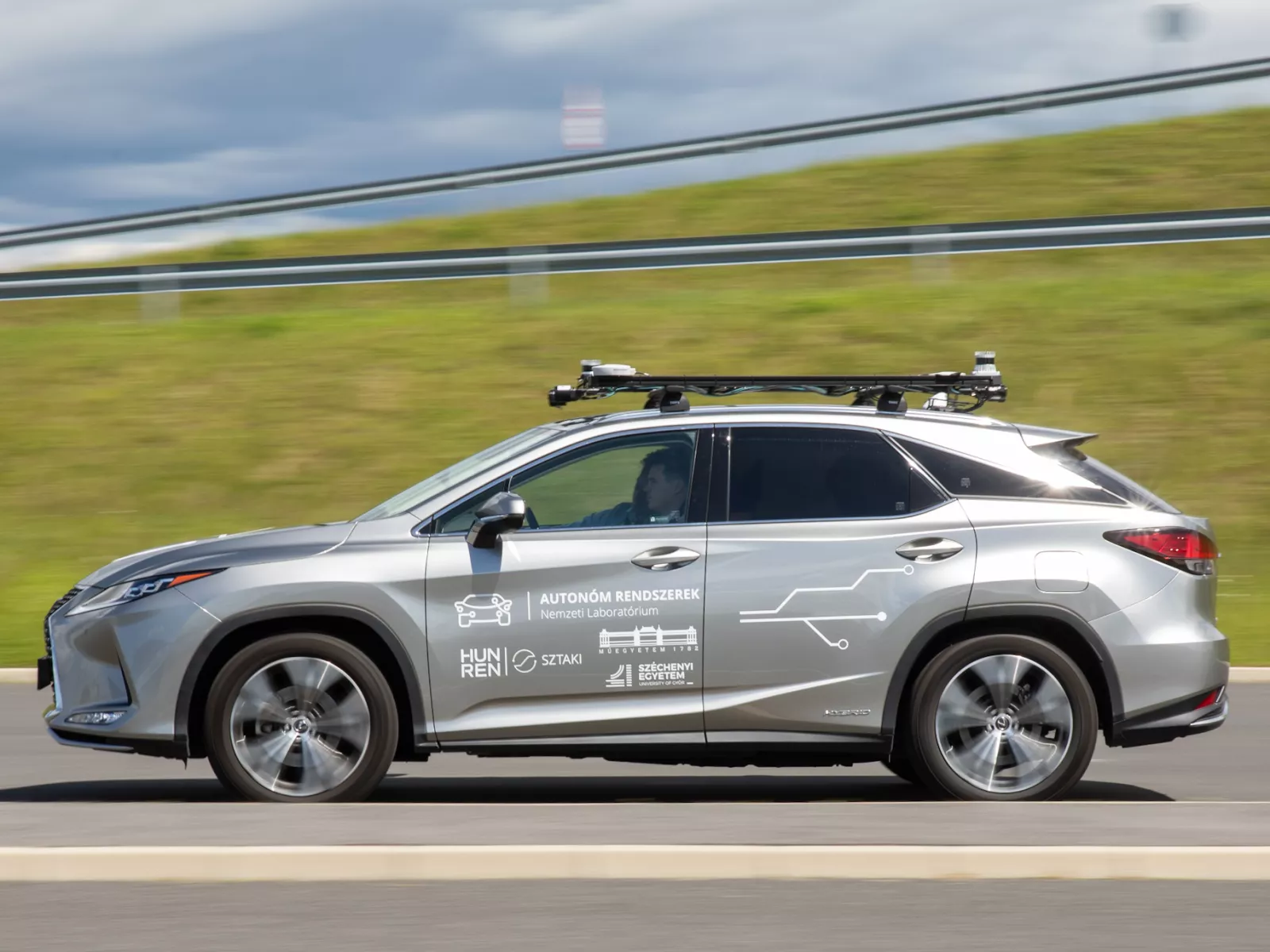
While most drivers can see no further than the next bend, the autonomous system developed by the Systems and Control Laboratory (SCL) at HUN-REN SZTAKI calculates several kilometres ahead: it analyses the terrain, traffic patterns, and road conditions in real time, achieving an average fuel savings of 7 percent – up to ten times more efficient than human routine driving.
Most drivers drive based on experience and momentary impressions. When there is an incline, we accelerate. When the light turns red, we brake suddenly. However, this often wastes fuel that could be saved elsewhere. At the SCL, however, autonomous systems are being developed that think differently. They don't just look at what's happening here and now, they calculate ahead: taking into account terrain, speed limits, traffic jams and even traffic lights.
"Traditional cruise control systems only react to the situation at a given moment. What we have developed is capable of anticipating. That's a huge difference," says Balázs Németh, lead researcher at HUN-REN SZTAKI SCL and ARNL.
How much can we gain from this?
The system's efficiency has already been tested in a real-world environment. Based on a road test conducted on the Budapest-Tatabánya route, fuel consumption was reduced by nearly 7 percent, with travel time increasing by only one minute. The savings do not come from slower travel, but from the fact that the vehicle does not find itself in energy-wasting situations, such as stop-and-go cycles.
"The goal is not for everyone to drive slower, but to avoid unnecessary stops and starts, as these consume the most energy and pollute the environment the most," adds the researcher.
According to data from researchers at HUN-REN SZTAKI SCL, an autonomous system with the right information can recognize and exploit energy-efficient driving opportunities more effectively than an experienced driver. It does not get tired, does not make impulsive decisions, and is able to drive with consistent logic over long distances.
For example, if a traffic jam is expected two kilometres ahead, the system can already reduce speed so that there is no need to brake suddenly later and drive at an unnecessarily high speed in the meantime. This allows the vehicle to continue rolling from momentum, while the driver would probably still be pressing the accelerator.
The technology works particularly well on flat country roads or in urban areas where traffic light cycles are known in advance. In these locations, the system not only reduces fuel consumption but also fine-tunes the vehicle's dynamics.
"The biggest gains can be made in hilly areas around cities. In such terrain, people typically do not drive ideally, but the machine knows exactly when to use momentum and when to slow down a little," explains Balázs Németh. On flat, lowland roads, however, there are fewer opportunities for fuel-saving optimization – there, human drivers can more easily achieve ideal energy consumption.
A solution that benefits everyone
The system developed by HUN-REN SZTAKI is platform-independent, meaning it is not tied to a single car type or drive system. "It doesn't matter to us whether the vehicle is gasoline, diesel or electric; the algorithm can always adjust the vehicle's movement to the external conditions. This makes it particularly useful for bus or truck fleets, for example," emphasizes the researcher.
This is also important because different drive systems behave differently: electric cars, for example, can recover energy when braking, while diesel vehicles operate optimally in a different speed range. The algorithm also takes these factors into account.
An interesting side effect is that if this type of predictive system is used in just 20-30 percent of the cars on the road, it also affects the movement of the others. This is because if these vehicles travel more evenly and predictably, human drivers will necessarily adapt to them. In other words, we save money even if we don't know that someone else has already thought ahead for us.
"Introducing such a system does not require replacing the vehicle fleet. It is already a huge step forward if human drivers receive accurate, forward-looking recommendations and do not have to rely on their own intuition in every situation," summarizes Balázs Németh. "Our development is currently at the stage where it works as a mobile application, which we hope will be available to the general public in the near future. In the future, vehicles will even be able to make decisions on their own, which could be the true fulfilment of this technology," adds the researcher of HUN-REN SZTAKI SCL.
The above press release received numerous online appearances in Hungarian professional and other media, such as alapjarat.hu, autoszektor.hu, carspectus.com, holtankoljak.hu, and iparicegek.hu.